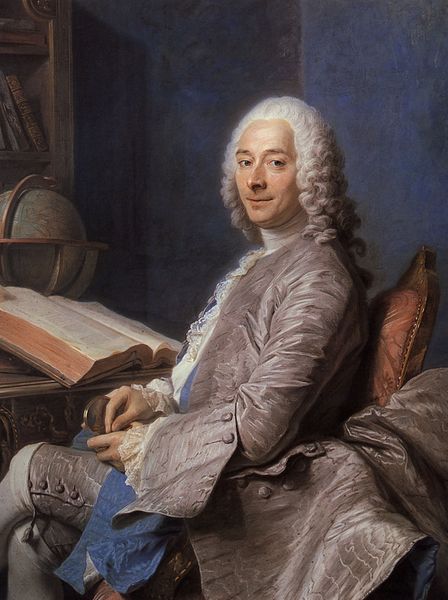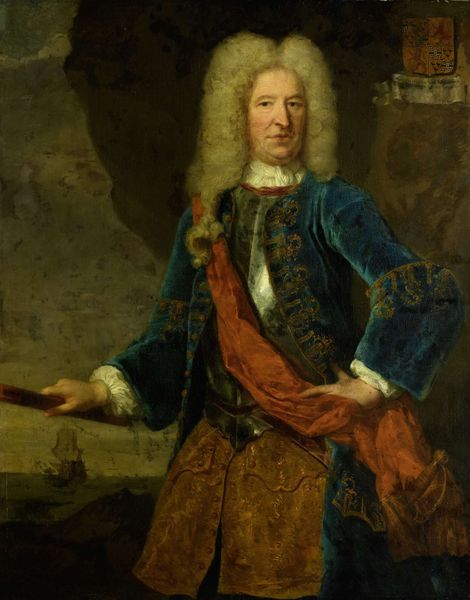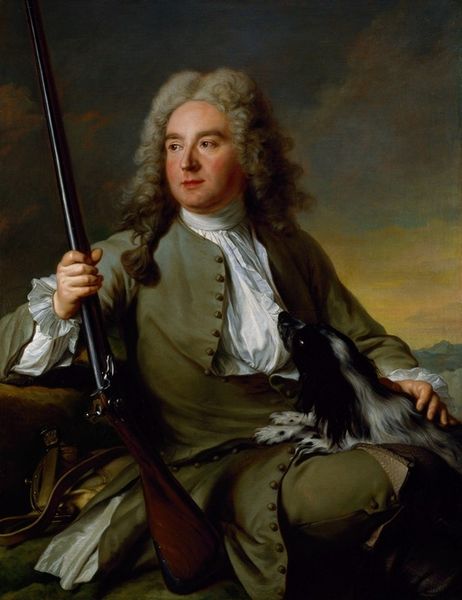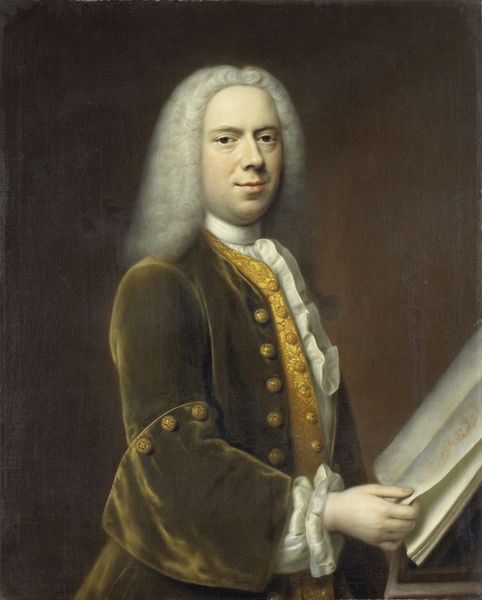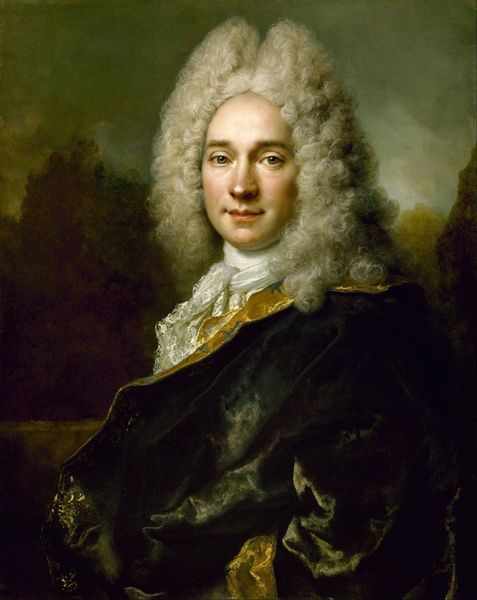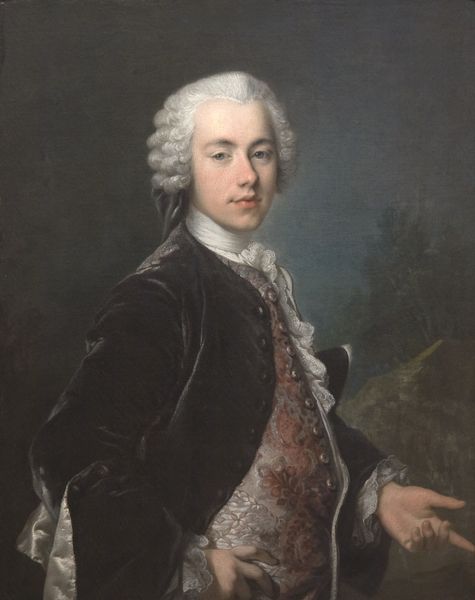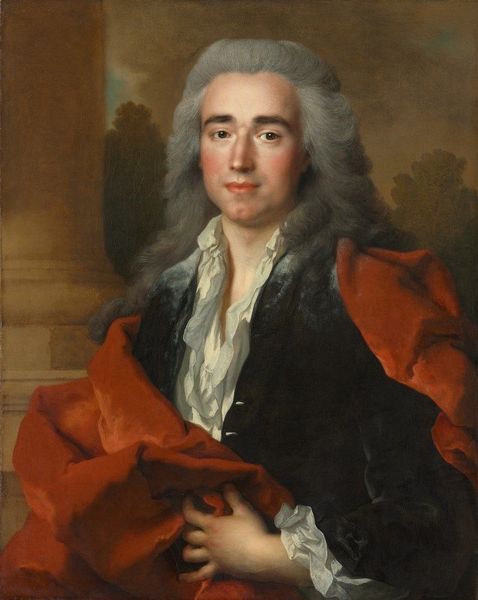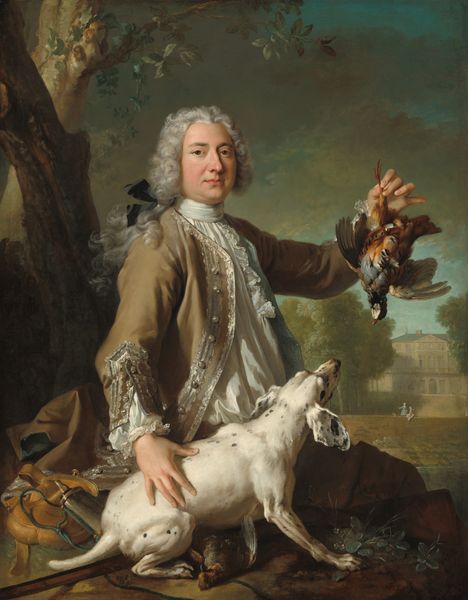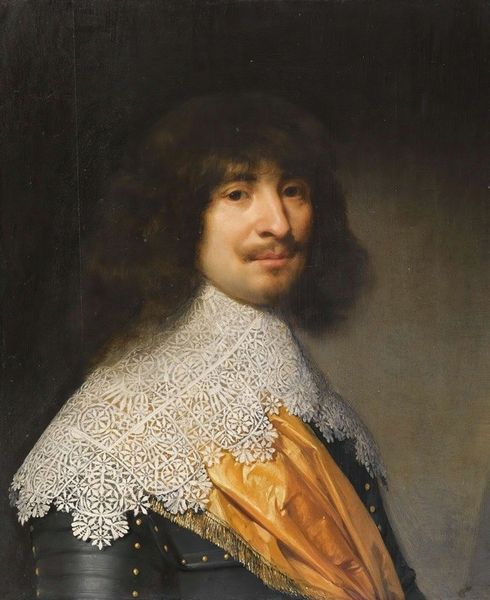
#
figurative
#
character portrait
#
possibly oil pastel
#
portrait reference
#
portrait head and shoulder
#
underpainting
#
animal drawing portrait
#
portrait drawing
#
facial portrait
#
portrait art
#
digital portrait
Copyright: Public Domain: Artvee
Curator: Let's discuss Jean-Marc Nattier's 1745 portrait of "Joseph Bonnier de la Mosson." Editor: The immediate feeling is one of opulent leisure, isn’t it? There's a soft, almost languid quality to the light and the pose. It exudes privilege. Curator: Indeed. The composition adheres to a pyramidal structure, anchored by Bonnier's figure. Note the muted color palette – browns, blues, and creams – that speaks to an understated elegance characteristic of the era's aristocratic portraiture. Semiotically, we observe the gaze directed off-canvas, creating a sense of intellectual detachment. Editor: I'm intrigued by the trappings of scientific pursuit depicted behind him: jars and what seem to be scientific instruments. It reads as performative intellectualism. How accessible was such scientific knowledge to the aristocracy? What did it mean for him to be portrayed surrounded by the instruments of study, as a wealthy person, benefiting from colonial exploitation at the time? Curator: The arrangement and the almost studied carelessness certainly project an air of sophisticated dilettantism, fitting with the Rococo fascination with surfaces and appearances. The open book is suggestive of the Enlightenment ideal, but the fur-lined coat and delicate lace cuffs reiterate his social position. The tension is deliberately set: intellectual interest juxtaposed with worldly luxury. Editor: Right. The question then becomes what are we to do with paintings of privileged men from centuries ago? The trappings of luxury can’t be separated from histories of global resource extraction and the dehumanization of laborers—where does that put us as observers? Curator: The painting serves as a compelling articulation of class, of how class constructs identity, and that can reveal much. By examining how elements like clothing, pose, and the symbolism of knowledge are used within this specific frame, the painting presents a valuable framework. Editor: I think that’s right—maybe looking closer at who we see represented can push us to wonder about who’s missing from our walls, both literal and figurative.
Comments
No comments
Be the first to comment and join the conversation on the ultimate creative platform.


